
CUSTOMIZED MOVING COIL UPGRADES
"SuakimLp" specializes in upgrading all types of MC styluses with a range of optimal options, delivering exceptional transformations for your cherished MCs!
WHAT UPGRADE OPTION ARE AVAILABLE?
There are many upgrade options available, such as replacing the coil from copper to silver, silver-plated, or gold to achieve better high-frequency response, stability, and longevity, especially in hot and humid climates like Vietnam. You can also switch to a diamond tip with greater durability and superior tracking and signal reproduction on records, or replace the cantilever with a more durable material for the most accurate signal transmission possible (e.g., upgrading from aluminum tube to boron, sapphire, ruby, carbon, or diamond, etc.).
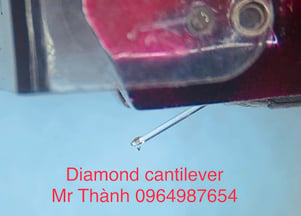

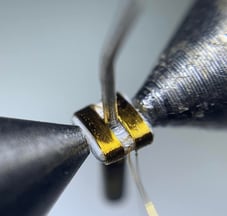



"My stylus is broken. It originally had an aluminum cantilever. Could you upgrade it to a diamond one for me?"
"I’ve heard that gold coils offer better sound quality and durability. Could you wind 24k gold wire for me? ...Okay."
HOTLINE: 0964.987654
1. Diamond tip upgrade:
Upgrade from a worn or low-quality diamond tip to a higher-grade option (e.g., from conical to elliptical, Shibata, or Micro Ridge). The goal is to achieve the best possible reproduction of the record. The highest-quality diamond tips are often designed to closely replicate or precisely mimic the shape of the cutting stylus used in the production of original LP or vinyl records at the factory.


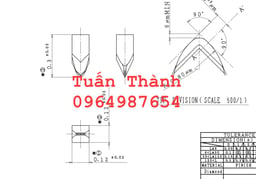

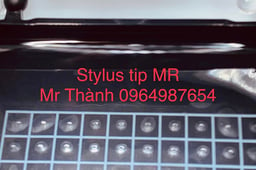

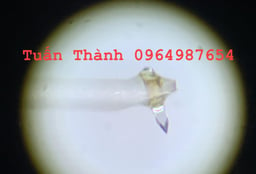

WHY... UPGRADE?
There are countless reasons to consider an upgrade, all depending on your preferences. If you wish to experience a new style tailored to your favorite music genre, upgrading is the perfect solution. At a fraction of the cost of a high-value new MC (sometimes 1/10th or 1/20th of the price), you can still enjoy the best possible musical experience from your beloved MC.
We provide expert consultation on the best materials and components suited to your MC's condition, ensuring an upgrade that enhances both performance and value.
Upgrading your MC stylus enhances its performance, sound quality, and durability, allowing you to rediscover your music with greater clarity and precision. It’s an excellent way to breathe new life into your cherished equipment, tailored to your specific preferences and needs.
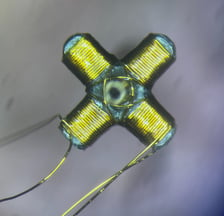

low-quality




SOME COMMON TYPES OF DIAMOND TIPS
Conical (Spherical) Tips:
Easy to manufacture and relatively inexpensive, conical tips typically feature a metal base with a diamond tip or a solid diamond construction. This design often appeals to listeners who do not prioritize high detail, as its bandwidth generally rolls off around 10k-20kHz, resulting in strong bass response.
However, this shape offers less precise tracking, with the tip only touching the center of the groove walls. Due to its wider contact surface, it tends to glide over high-density signals within the groove walls, leading to lower fidelity and resolution.
That said, conical tips have an advantage when playing dirty or damaged records, as they are less prone to producing pops and crackles compared to higher-end stylus types (explained further in the FAQ section).




Elliptical tips:
Elliptical Tips (also known as Bi-Radial Tips) are an improvement over Conical (Spherical) Tips. Below is a detailed explanation:
Shape and Structure: Elliptical tips feature two flattened surfaces, creating an elliptical shape when viewed from the tip. Thanks to this design, the stylus makes more accurate contact with the record groove compared to conical tips.
Reduced Distortion: Because the contact area at the tip of an elliptical stylus is smaller than that of a conical stylus, elliptical tips help reduce distortion and groove mis-tracking, especially at higher frequencies.
Enhanced Detail Retrieval: With better contact against the groove walls, elliptical tips capture more details and provide clearer, more accurate high-frequency reproduction, resulting in a more vibrant listening experience.
Widespread Use: Elliptical tips are widely used in many cartridge models, from entry-level to mid-high-range options. They are a reasonable choice for those seeking decent sound quality without the higher cost of premium styli (such as line-contact, Shibata, MicroLine, etc.).
In conclusion, Elliptical Tips offer a balance of cost and sound quality and are easily accessible on the market, making them an ideal choice for most LP enthusiasts looking to upgrade from conical tips and enjoy enhanced audio performance.




Shibata tips:
Shibata Tips are a type of line-contact stylus originally developed by JVC in the 1970s to meet the high-frequency demands of Quadraphonic (four-channel) vinyl records. Their shape features extended vertical contact with the groove walls, which significantly increases the contact area compared to conical or elliptical tips. As a result:
Better High-Frequency Tracking: Shibata tips can more accurately trace the fine modulations in the groove, reproducing delicate high-frequency details.
Lower Distortion: The larger contact area reduces pressure on the groove walls, which can minimize distortion and groove wear.
Greater Detail Retrieval: Because they trace more of the groove’s intricate information, Shibata tips often deliver enhanced clarity and resolution.
Sensitive to Setup: The precise alignment is more critical for Shibata tips. Incorrect VTA (Vertical Tracking Angle), azimuth, or overhang can lead to distortion or uneven wear on both the stylus and record.
Overall, Shibata tips offer high-fidelity performance, particularly cherished by audiophiles seeking superior sound reproduction, but they do require careful setup and proper maintenance to unlock their full potential.




MicroRidge tips (MR)/Microline/Microliner:
MicroRidge (MR), also known as MicroLine or MicroLiner, is a stylus tip shape distinguished by its extremely thin scanning edge.
Developed to closely replicate the geometry of the original cutting stylus, it delivers superior detail retrieval compared to conical or elliptical designs.
Its slim profile allows the tip to ride deeper in the groove, capturing intricate sonic information and offering an extended frequency response.
The line-contact design distributes pressure over a larger vertical area, reducing groove wear and surface noise for a cleaner background.
Precise alignment—especially azimuth, overhang, and VTA—is crucial to fully harness its capabilities.
Due to the specialized manufacturing process, these stylus tips are generally more expensive but reward the listener with exceptional accuracy.
Audiophiles value MicroRidge tips for their excellent tracking ability and clarity in handling complex musical passages.
Their enhanced contact profile also helps minimize sibilance, ensuring a smoother, more nuanced high-frequency response.
Overall, MicroRidge-based styli represent one of the highest performance levels in vinyl playback.
They are an ideal choice for enthusiasts seeking uncompromising detail, resolution, and fidelity in their analog experience.
Other Diamond Types
There are many other diamond tip varieties, each known by different names—Liner Contact, Conical Bonded, Conical Nude, Special Line Contact, Ortofon Fine Line, Dynavector MR, MicroLine MR, Jico SAS, and more. Some are produced in-house by manufacturers for their own stylus lines, while others are supplied by external vendors. However, due to trade secrets, many tips that look nearly identical may carry different names. For example, if you compare variants of MicroRidge from Audio-Technica, Shure (MicroRidge), or Jico SAS, you’ll find they share virtually the same shape despite having different branding.


By now, you likely have a clearer understanding of why you might need to change or upgrade the diamond tip on your beloved MC.
2. Cantilever upgrades:
The cantilever is a crucial part of an MC cartridge. Its job is to keep the diamond tip in the correct position for signal pickup and accurately transfer vibrations to the coil. Traditionally, cantilevers were made of aluminum or various alloys due to their low cost and ease of manufacturing; however, they often have a shorter lifespan, limited signal transmission capabilities, and higher distortion levels.










Nowadays, cantilevers come in a wide variety of types, as they need to be lightweight, rigid, and mechanically durable. For these reasons, rare materials are often used to enhance durability and, most importantly, to transmit vibrational signals accurately with minimal distortion. Examples include beryllium, boron, sapphire, ruby, carbon, and diamond. These materials are commonly found in high-end MC cartridges, boasting impressive technical specifications and earning high praise from users.
If your cherished stylus happens to be broken or has lost its quality, please feel free to contact us for consultation. We will help you select one of the components shown (in the accompanying images) that best fits your MC cartridge.
3. Coil upgrades (Coil rewinding):
In an MC (Moving Coil) cartridge, the coil can be seen as its “heart,” playing a crucial role in receiving vibrational signals from the cantilever and converting them into electrical signals—at minimum within the audible frequency range of roughly 20Hz to 20kHz. After passing through amplification, these signals are transformed into the audio you hear through speakers.
Traditionally, extremely fine copper wire (about 0.01–0.03mm in diameter) is used for winding the coils. However, after decades of use under high-stress conditions, the coil’s quality may degrade, and oxidation can alter its electrical properties or cause breaks. When rewinding becomes necessary, you can choose to restore it to its original specifications or upgrade to higher-grade wire with longer lifespan and potentially better high-frequency response. “SuakimLp” currently offers the following coil wire options: OFC copper, silver-plated copper, pure silver, and pure gold.










